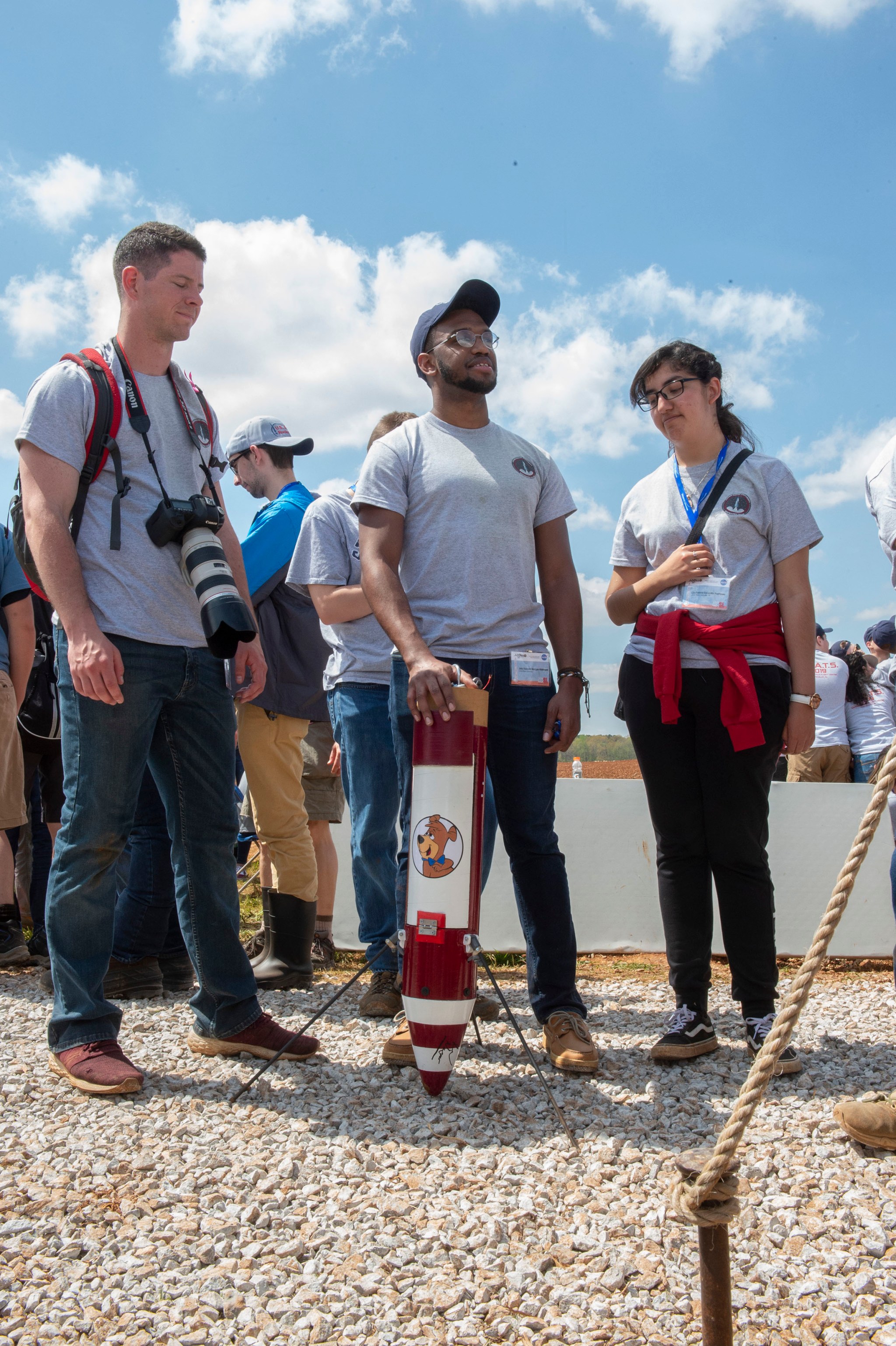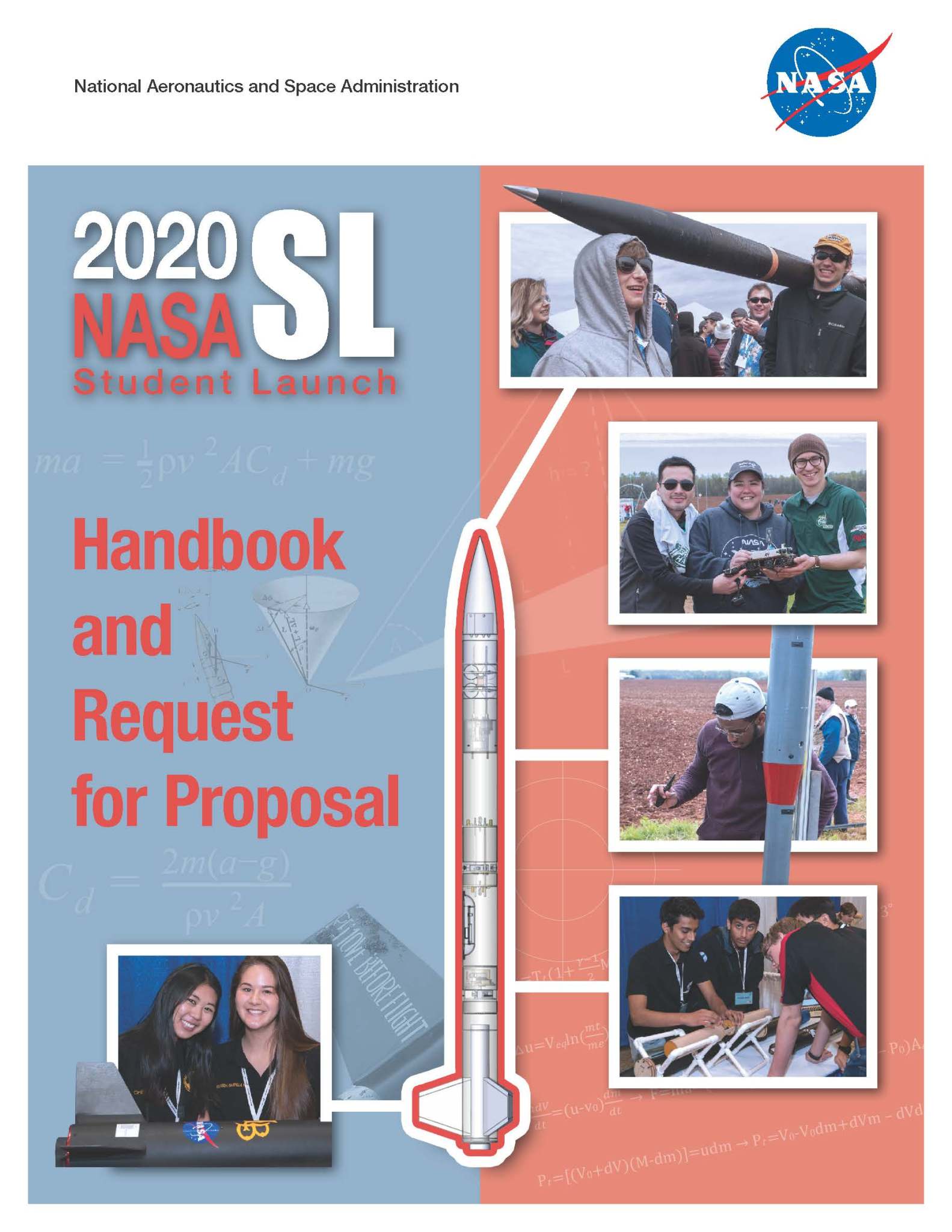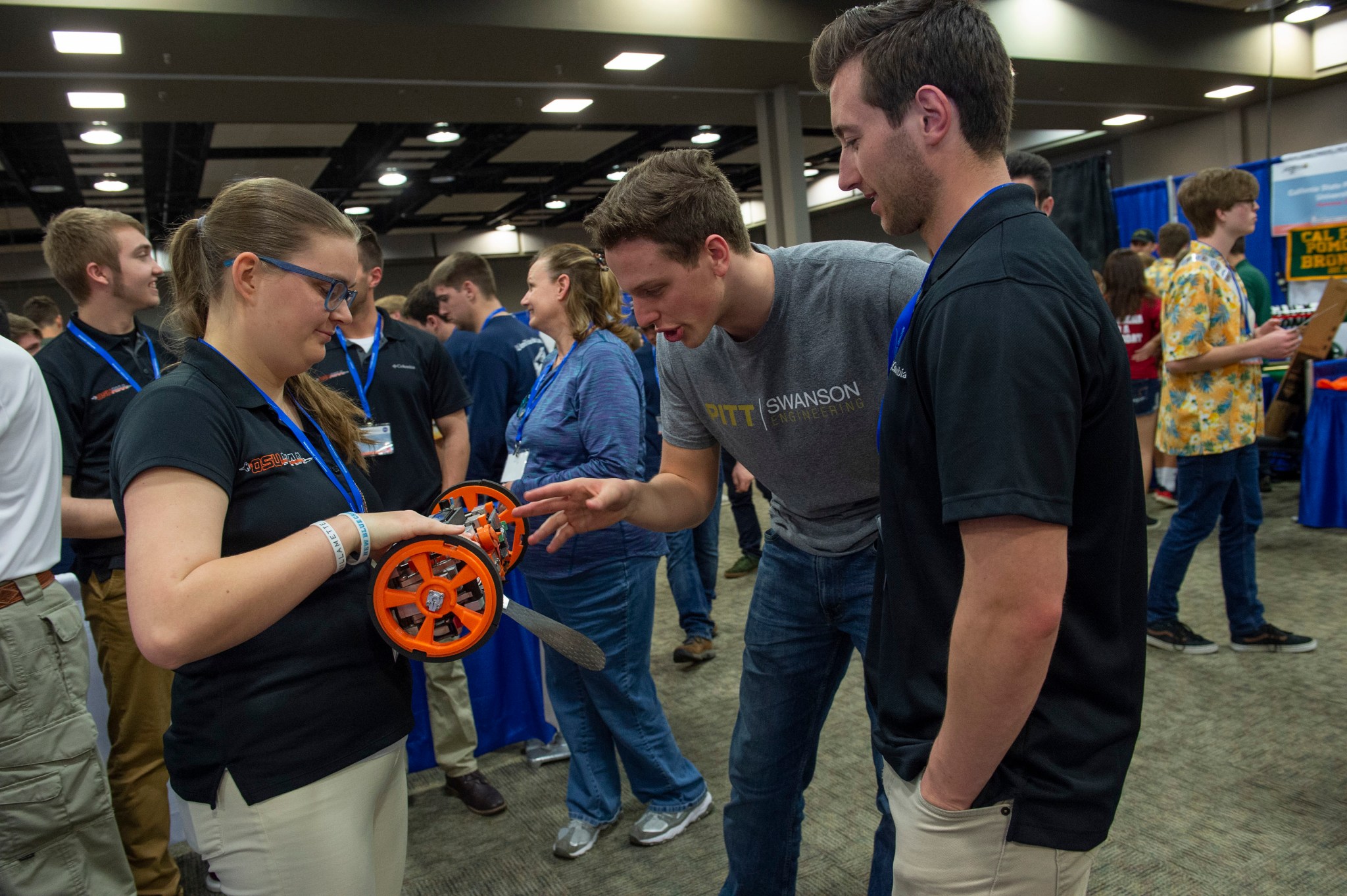As the new school year begins, so does the 20th year of NASA’s Student Launch competition, an annual program that challenges middle school, high school and college students from around the country to design, build and test a rocket and payload.
The competition’s handbook, released Aug. 22, provides guidelines for proposals as well as rules for the entire competition, including the new payload challenge for the college division. Interested student teams must submit their proposals by 3 p.m. CDT Sept. 18.
“This year, we are giving the college and university teams the specific objective to recover simulated lunar ice. The approach they use to accomplish the goal is up to them,” said Katie Wallace, Student Launch program manager at NASA’s Marshall Space Flight Center in Huntsville, Alabama. “The new challenge resembles the real-world scenario engineers and scientists face when determining the best way to collect samples — whether for use by astronauts on the Moon or for scientific study.”
On launch day in April 2020, each team’s payload will ride aboard their rocket to between 4,000 and 5,500 feet. The payload, which may deploy before or after the rocket safely lands under parachutes, will travel to one of five sample sites, collect and store at least 10 milliliters of simulated ice and then travel at least 10 feet away from the site.
In past years, teams in the college division were given different payload options they could choose to develop — such as a rover or an unmanned aerial vehicle — instead of an objective to complete.
Teams competing in the middle/high school division can attempt the new sample retrieval challenge or propose to conduct a scientific or engineering experiment of their own creation. In last year’s competition, the St. Vincent-St. Mary’s High School team from Akron, Ohio, flew a magnetically levitated payload to investigate alternate methods of safely delivering fragile payloads into space.
The altitude rules introduced in the 2018-2019 competition remain unchanged. When teams submit their preliminary design review package — one of many documentation and presentation milestones throughout the eight-month competition year — they will “call their shot” and declare how high they will fly on launch day. The team in each division closest to their projected altitude will win the altitude award. Last year’s winner in the college division missed their target altitude by just 12 feet.

Teams are evaluated and given points and awards in nearly a dozen other categories including safety, vehicle design, social media presence and STEM engagement. The Science, Technology, Engineering and Mathematics engagement award encourages and recognizes the teams for sharing their knowledge and experiences with the next generation of engineers, scientists and explorers.
Entering its third decade of competition, Student Launch provides a realistic experience for middle school, high school and college students to follow the engineering design process NASA and industry engineers use when developing and operating new hardware.
Marshall’s Office of STEM Engagement manages Student Launch to stimulate innovation and advance NASA’s mission through collaboration with educational institutions and students – the Artemis generation who will help us explore the Moon and Mars. The office also furthers NASA’s goal of attracting and encouraging students to pursue degrees and careers in the STEM fields. NASA’s Human Exploration and Operations Mission Directorate and the Office of STEM Engagement, as well as Northrop Grumman, and the Huntsville chapter of the National Space Club provide funding and leadership for the initiative.
For more information about NASA Student Launch, visit:
https://www.nasa.gov/audience/forstudents/studentlaunch/home/index.html
The Student Launch Handbook is available at:




























